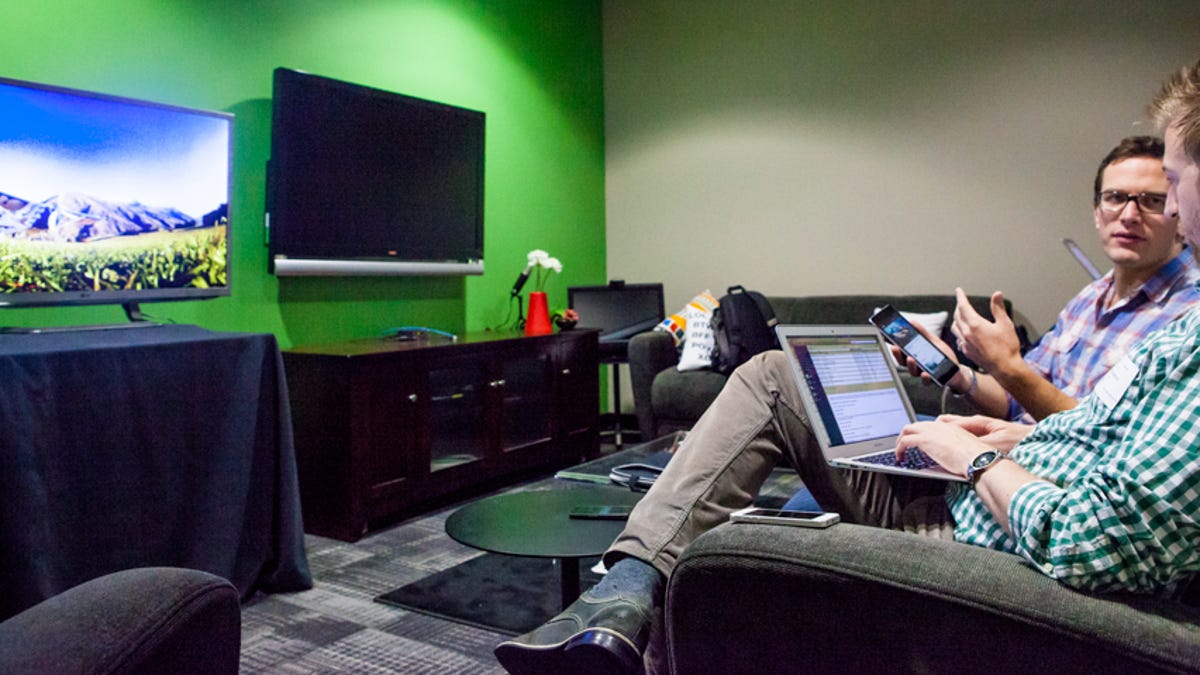YouTube updates Android app for one-tap sharing to Google TV
Move over, AirPlay -- Google's latest take on wireless streaming does Apple one better.

Like many consumers of online video, Timbo Drayson wanted badly to bring his favorite viral clips from his smartphone to the big screen. But doing so hasn't always been easy, particularly for Google TV owners like himself.
"I love it when the video is playing," Drayson said. "But actually trying to navigate with these remotes is a nightmare."
Fortunately, as a product manager for YouTube, Drayson is in a position to do something about it. Recently, Drayson has been working in Google's London office on a new feature for YouTube designed to make streaming to the television easier than it has ever been on Android. The feature rolls out today.
Users of Android smartphones and tablets who update the YouTube app will see a new button making it possible to stream from their devices to the television in a single tap, so long as they are connected on the same Wi-Fi network. It replaces a seven-step process used to pair the YouTube app with GoogleTV and gaming consoles that even YouTube executives found cumbersome.
"This is bringing out my inner nerd," Drayson said recently at the Google TV office in Mountain View, Calif. Inside a plush demonstration room where the walls are painted Android green, Drayson sits down on the couch and picks up his Nexus 7 tablet. A television running Google TV software is perched on a stand a few feet away.
Drayson, who is planning a ski trip, did a quick search for GoPro skiing videos inside the YouTube app. When he found one he liked, he hit a single button -- and within a second or so, it began to play on the big screen.
It's a small feature that represents a big step for Google TV in its effort to become friendlier to less tech-savvy consumers. Earlier efforts have met with mixed-to-bad reviews.
"My goal here is really just to enable my mum to do it," Drayson said. "I want her to be able to not even realize what she's doing, and without even knowing it she's finding videos and watching them on TV."
Making sharing easier
Since introducing the YouTube pairing feature in 2010, the company noticed that users who had paired their devices to the screen spent significantly more time watching YouTube videos. More time watching YouTube means more money for Google, of course, and the Google TV division has worked to make pairing easier over time. Now that it works with a single tap, Google has matched the experience offered by Apple with its AirPlay wireless technology for Apple TV.
In some ways, the updated YouTube app goes further than AirPlay does. With AirPlay, users can't navigate around inside YouTube while a video is playing. With the updated Android app, on the other hand, Google encourages users to play around inside YouTube. A new button allows users to add videos to a "watch later" queue, and multiple users can participate. Google envisions parties where groups of friends will all add videos to the queue using their mobile devices, all using the same one-tap functionality.
To start, the new features can bridge only Android devices and Google TVs. But features that launch on YouTube for Android these days typically follow quickly to iOS. And some day the same one-tap feature could let users stream from their mobiles devices to consoles like the Xbox 360 and Playstation 3.
"It's all about making this super simple to watch the videos on TV," Drayson said.
"Simple" and "Google TV" aren't words that are often heard in the same sentence. But with this update, Google is a step closer to making that goal a reality.

